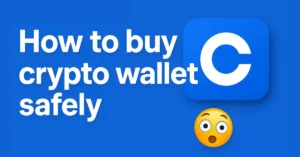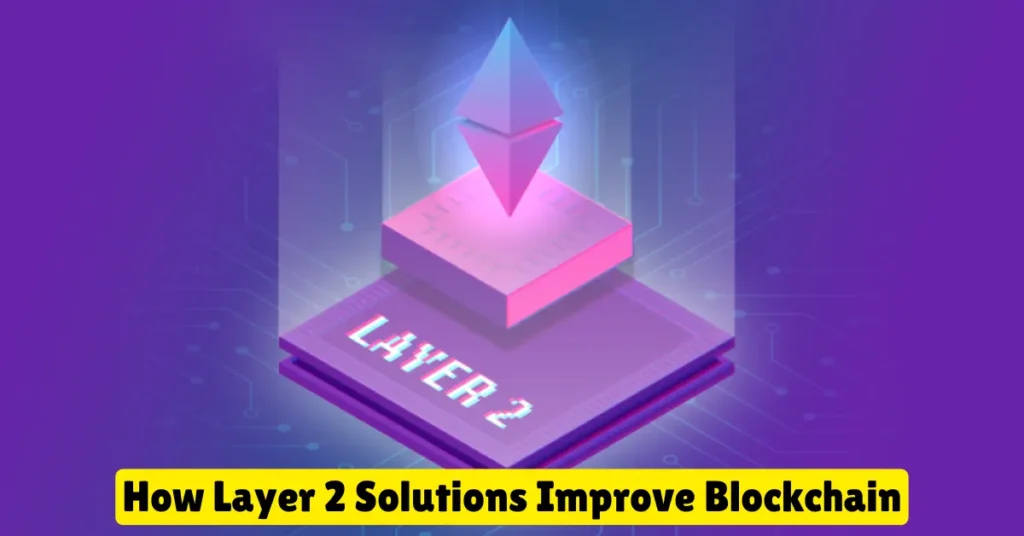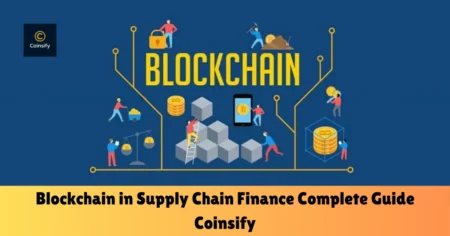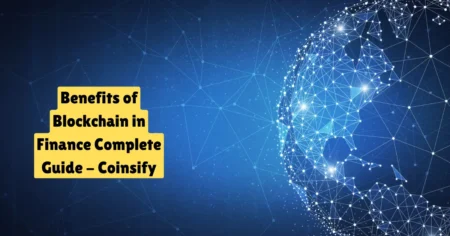How Layer 2 Solutions Improve Blockchain
Introduction
Blockchain is one of the most exciting technologies of our time. It promises secure, transparent, and decentralized systems that can be used for everything from money transfers to smart contracts. But as more people started using blockchains like Ethereum and Bitcoin, some big problems became clear: slow transactions, high fees, and network congestion.
These issues make it difficult for blockchain to grow and be used in everyday life. That’s where Layer 2 solutions come in. They are special technologies built on top of existing blockchains to make them faster, cheaper, and easier to use without giving up security.
In this blog, we’ll break down what Layer 2 solutions are, how they work, and why they’re so important for the future of blockchain. Whether you’re new to crypto or already familiar with blockchain, this guide will help you understand how Layer 2 is changing the game.
What is a Layer 2 Solution?
A Layer 2 solution is a technology or protocol built on top of an existing blockchain (Layer 1) like Ethereum or Bitcoin, to make it faster, cheaper, and more efficient.
Think of it like adding a fast-moving express lane above a busy highway. The main highway (Layer 1) is secure but can get crowded and slow. The express lane (Layer 2) helps handle more traffic without changing the main road. It still connects to the highway, but it lets most of the traffic move faster and more smoothly.
Layer 2 handles transactions off the main blockchain, bundles them together, and then sends a summary back to Layer 1 for final confirmation. This reduces the load on the main chain and helps solve issues like slow speeds and high gas fees.
In simple terms:
- Layer 1 = the base blockchain
- Layer 2 = the helper system that boosts speed and cuts costs
By using Layer 2, blockchain networks can support more users and applications without losing security or decentralization.
Why Do Blockchains Need Layer 2?

Blockchains are powerful, but they’re not perfect. As more people started using them, some major problems appeared, especially with popular networks like Ethereum and Bitcoin. These issues include:
- Slow transaction speeds
- High fees (especially during busy times)
- Limited number of transactions per second
This is because most blockchains face what’s called the “scalability trilemma.” It means they struggle to achieve three important things at the same time:
- Security – keeping the network safe from attacks
- Decentralization – not controlled by any single party
- Scalability – handling large numbers of users and transactions
Usually, improving one of these areas means sacrificing another. For example, increasing speed might reduce security or decentralization.
Layer 2 solutions help solve this problem. They allow blockchains to handle more transactions without changing their core structure. They do this by moving most activity off the main chain (Layer 1) while still using it for final settlement and security.
In short, blockchains need Layer 2 to:
- Scale up and grow
- Support real-world apps like games, finance, and NFTs
- Offer a better user experience with faster and cheaper transactions
Without Layer 2, it’s hard for blockchain technology to reach its full potential or support millions of users around the world.
Key Ways Layer 2 Improves Blockchain
Layer 2 solutions are built to fix the biggest problems in blockchain: speed, cost, and congestion. Let’s look at the main ways Layer 2 makes blockchain better:
Faster Transactions
On busy blockchains like Ethereum, transactions can take several minutes—or even longer—to be confirmed. Layer 2 solutions move most transactions off the main chain, allowing them to be processed much faster. Some Layer 2 networks can handle thousands of transactions per second, compared to just 10–30 on Layer 1.
Lower Fees
When too many people use a blockchain at the same time, the fees (called gas fees) go up. This makes it expensive to send money, trade tokens, or use apps. Layer 2 helps reduce these fees by processing transactions more efficiently off-chain. Users often pay just a fraction of the cost compared to using the main chain directly.
Less Network Congestion
High demand can slow down the entire blockchain. By shifting most of the transaction activity to Layer 2, the main chain stays less crowded. This means fewer delays and a more reliable experience for everyone using the network.
Better User Experience
With faster and cheaper transactions, using blockchain apps (like games, DeFi platforms, or NFT marketplaces) becomes smoother and more enjoyable. Users don’t have to wait or worry about surprise fees, which makes blockchain more appealing for everyday use.
Strong Security Backed by Layer 1
Even though transactions happen off the main chain, most Layer 2 solutions still connect back to Layer 1 for final settlement and security. This means you get the speed of Layer 2 with the security of the base blockchain—a powerful combination.
In short, Layer 2 doesn’t replace the original blockchain—it makes it work better for everyone.
Popular Types of Layer 2 Solutions

There are different types of Layer 2 solutions, each using a different method to improve blockchain performance. Let’s go over the most common ones and how they work:
Rollups
Rollups bundle (or “roll up”) many transactions into one single transaction and send it to the main chain. This helps save space and lowers costs. Rollups come in two main types:
Optimistic Rollups
These assume that transactions are valid by default. Only if someone challenges them does the system check for fraud. This makes them fast and efficient.
Examples: Arbitrum, Optimism
ZK-Rollups (Zero-Knowledge Rollups)
These use cryptographic proofs to instantly confirm that transactions are valid, without revealing full details. They are faster and more secure, but more complex.
Examples: zkSync, StarkNet
State Channels
State channels let two or more users do multiple transactions off-chain, like opening a private tab. Once they’re done, only the final result is recorded on the blockchain.
- They’re great for situations where users need to make frequent, fast, and low-cost transactions, like in gaming or micropayments.
Example: Lightning Network (used with Bitcoin)
Plasma
Plasma creates smaller blockchains—called child chains—that are connected to the main chain. These child chains handle most of the work and only send summarized data to the main chain.
- It’s good for reducing load on the base blockchain, but not ideal for apps that need instant withdrawal or high-speed interaction.
Example: OMG Network (now Boba Network)
Sidechains
Sidechains are independent blockchains that run alongside the main chain. They use their own rules and security systems, but are connected through a bridge. This allows assets to move between the two.
- They offer high flexibility and lower fees, but rely on their validators, so they are not as secure as other Layer 2 types.
Example: Polygon PoS Chain
Validium
Similar to ZK-Rollups, Validium uses zero-knowledge proofs but keeps transaction data off-chain instead of storing it on Layer 1. This offers high scalability but depends on external systems to hold the data securely.
Example: StarkEx (used by dYdX)
- Each Layer 2 type has its strengths, and developers choose the one that best fits their app’s needs, whether it’s speed, cost, privacy, or ease of use.
Real-World Applications of Layer 2
Layer 2 solutions are not just technical upgrades—they’re actively being used in real projects that people interact with every day. These applications show how Layer 2 is making blockchain faster, cheaper, and more practical for real-world use.
DeFi (Decentralized Finance)
Decentralized finance apps allow users to lend, borrow, trade, and earn interest without banks. But high gas fees on Layer 1 made small transactions too expensive.
Layer 2 fixes this by cutting costs and speeding up transactions.
Example:
- Uniswap on Arbitrum and Optimism allows faster swaps with lower fees.
- Aave is integrating with Layer 2 to make lending and borrowing more efficient.
NFTs and Gaming
NFTs and blockchain games involve a lot of small, quick actions like minting, trading, and transferring items. On Layer 1, these can become slow and costly.
Layer 2 makes it possible to offer a smooth gaming or NFT experience without high fees.
Example:
- Immutable X is built for NFTs and games, offering zero gas fees for trading.
- Games like Gods Unchained use Layer 2 to scale player activity.
Payments and Micropayments
Sending small amounts of money on Layer 1 can be expensive due to high gas fees, making it impractical for things like tipping, subscriptions, or cross-border payments.
Layer 2 makes real-time, low-cost payments possible—even for tiny amounts.
Example:
- Lightning Network (for Bitcoin) allows instant and cheap BTC transfers.
- Wallets like Strike use Layer 2 to enable low-fee crypto payments globally.
Web3 Apps and DAOs
Decentralized applications (dApps) and decentralized autonomous organizations (DAOs) often require many on-chain actions like voting, staking, or creating proposals. Layer 2 ensures these actions are affordable and fast.
Example:
- Web3 platforms like Lens Protocol and Mirror.xyz use Layer 2 to improve performance and reduce costs for users.
Exchanges and Trading Platforms
Crypto exchanges need to offer fast trade execution and low fees to stay competitive. Layer 2 helps decentralized exchanges match the performance of centralized ones.
Example:
- dYdX is a decentralized exchange built on StarkEx, a Layer 2 platform, allowing fast, gas-free trading.
- These real-world use cases show that Layer 2 is not just a future solution—it’s already making blockchain better today.
Challenges and Limitations of Layer 2
Layer 2 solutions bring major improvements to blockchain performance, but they also come with some challenges and limitations. Like any new technology, they’re still evolving and not yet perfect.
Let’s look at some of the key concerns:
Complex User Experience
- Many Layer 2 networks require users to bridge their tokens from the main blockchain to Layer 2. This can be confusing for beginners and often involves multiple steps, new wallets, or unfamiliar interfaces.
- The onboarding process needs to be simpler for mass adoption.
Interoperability Issues
- There are many different Layer 2 solutions, and they don’t all work well together. Moving assets between Layer 2 networks—or between Layer 2 and Layer 1—can be slow or costly, depending on the technology.
- This lack of seamless communication between networks can slow down user growth.
Security Risks in Bridges
- To move assets between Layer 1 and Layer 2, users rely on bridges—special smart contracts that handle asset transfers. If these bridges are poorly designed or hacked, they can lead to large financial losses.
- Even though Layer 2 inherits security from Layer 1, bridges are a weak point that must be secured properly.
Developer Complexity
- Building apps on Layer 2 sometimes requires developers to learn new tools, environments, or frameworks. This adds extra effort and slows down development, especially when trying to support multiple Layer 2s.
Limited Ecosystem Support (Still Growing)
- Not all apps, wallets, and tools support Layer 2 yet. Although this is changing quickly, some Layer 2 platforms still lack the full ecosystem that exists on Layer 1 chains like Ethereum.
- As a result, users may find fewer services or features available on certain Layer 2 networks.
Delays in Withdrawing to Layer 1
- Some Layer 2 solutions (like Optimistic Rollups) have a waiting period for withdrawals back to the main chain, often several days. This can be inconvenient for users who need fast access to their funds.
Final Thought on Limitations
Despite these challenges, the benefits of Layer 2 far outweigh the downsides. Most of these issues are actively being worked on by developers and the community, and improvements are happening fast.
Frequently Asked Questions (FAQs)
What is the difference between Layer 1 and Layer 2?
Layer 1 is the main blockchain, like Ethereum or Bitcoin. It handles all the core tasks like security and transaction processing.
Layer 2 is built on top of Layer 1 to make it faster and cheaper. It processes most activity off-chain, then sends a summary to Layer 1 for final confirmation.
Is Layer 2 safe to use?
Yes, most Layer 2 solutions are designed to be secure. They still rely on the Layer 1 blockchain for final settlement and security. However, users should be cautious when using bridges, as they can sometimes be vulnerable.
Do I need a special wallet to use Layer 2?
Some Layer 2 networks work with popular wallets like MetaMask, but you might need to manually add the Layer 2 network or use a dedicated wallet (like for Arbitrum, zkSync, or Optimism).
Many wallets and apps are adding better support to make this easier.
Are Layer 2 transactions free?
They’re not completely free, but fees are much lower compared to Layer 1. You can often do transactions for just a few cents—or even less—depending on the network.
Can I use the same tokens on Layer 2 as on Layer 1?
Yes, you can usually use the same tokens, but you may need to bridge them to the Layer 2 network first. Once bridged, they’ll work just like normal tokens but with lower fees and faster speeds.
Why are there different types of Layer 2 solutions?
Each type (like Rollups, State Channels, Sidechains) has its own strengths and use cases. Some are better for payments, others for trading, gaming, or DeFi. Developers choose based on what their project needs most—speed, security, or flexibility.
Will Layer 2 replace Layer 1 in the future?
No. Layer 2 is designed to work with Layer 1, not replace it. Layer 1 provides the security and base infrastructure, while Layer 2 makes everything faster and more scalable.
Is Ethereum 2.0 (or upgrades like it) still needed if we have Layer 2?
Yes. Layer 2 helps with scaling, but Ethereum upgrades (like sharding) will also improve the base chain. Together, they make the network even stronger and more efficient.
Conclusion
Layer 2 solutions are changing the way blockchains work by making them faster, cheaper, and more scalable. They solve many problems that slow down popular networks like Ethereum, helping blockchain technology reach more users and real-world applications. While there are still some challenges, Layer 2 is a key step toward a better, more efficient blockchain future.
Bonus Points
- Layer 2 solutions help reduce environmental impact because processing transactions off-chain uses less energy than doing everything on the main blockchain.
- Many Layer 2 projects offer developer grants and support, encouraging innovation and helping new apps grow quickly.
- Layer 2 adoption is growing fast; more exchanges, wallets, and dApps are adding Layer 2 support every month.
- Using Layer 2 can help blockchain reach mainstream users, making it easier for people to use crypto without worrying about high fees or long waits.
- Layer 2 technologies are constantly evolving, with innovations like zk-Rollups improving speed and security even more.
Also read
- What is a Crypto Wallet and How Does It Work? – Coinsify
- 10 Crypto Terms Every Beginner Must Know – Coinsify
- What is Blockchain Technology – Complete Guide – Coinsify
- How to Buy Crypto Safely in 2025 – Complete Guide – Coinsify
- Bitcoin vs Ethereum: Key Differences Explained – Complete Guide
- Ultimate Blockchain Glossary: Learn Blockchain Terms Easily
- How to Buy Bitcoin Safely (Complete Beginner’s Guide)
- Top 10 Crypto Wallets for Beginners (2025 Edition)
- What is Cryptocurrency? A Beginner-Friendly Guide (2025)






